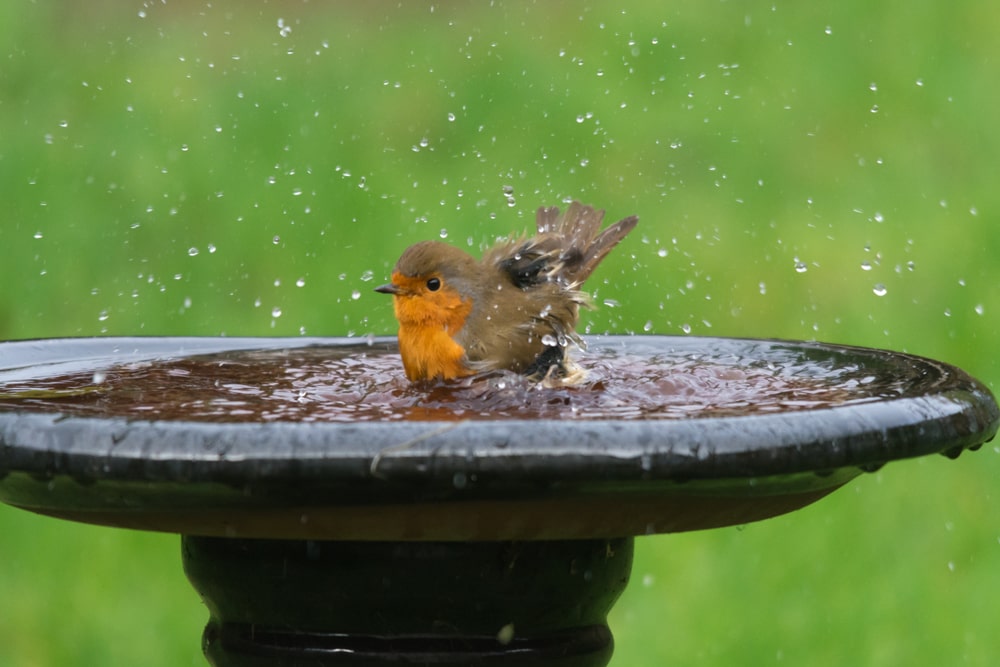So we try to feed the caterpillars AND the butterflies. What else can we do to make our yards a wildlife-friendly place?
Creating a Wildlife Friendly Yard
Whenever possible, we can incorporate native plants into our landscape. After all, these are the plants that wildlife expects to be here. Our ecosystem is based on what native wildlife will and won’t eat. Primarily use native berry and seed plants as these will attract birds.
We can also provide clean, fresh water. Birdbaths, fountains, and ponds are all very important to wildlife. I read an article recently that said more birds die over the winter from lack of drinking water than from food. I even got a heater for my birdbath to keep the water from freezing.
Chemicals and Your Yard – Let’s Be Cautious
We need to be very cautious in using chemicals in our yards—as a matter of fact, I don’t use ANYTHING but organic. Even a weedkiller/herbicide can kill insects if sprayed directly on them.
If you must use an herbicide or pesticide, then read, read, read the label very carefully, and do exactly what it says—never more. Timing is everything. If you apply products just before dark, most bees and butterflies have already gone home by then. And remember, even an organic product can kill the good guys if misused.
Planting Natural Deer Repellants
As for deer, I use natural repellents like herbs, onions, and garlic. Strong-scented herbs surround my raised garden bed, and deer don’t bother the veggies there. Plant onion sets or garlic. You’ll enjoy the harvest, but their oniony-scented foliage repels nibblers.
Your Wildlife Friendly Yard
Why sweat the clover patch in the backyard if we want a wildlife-friendly yard? The clover is food for bees. So what if a few inchworms are hanging from the maple tree in the front yard next spring? Those inchworms are food for birds. And, yes, if they do eat some of the leaves, the maple will grow more.
And I’ll plant an extra tomato for the tomato hornworms if they show up—after all, a tomato hornworm turns into a hawkmoth—a beautiful gray hummingbird-like moth that POLLINATES!
Learn More
For more information on creating a wildlife-friendly habitat in your yard, visit the National Wildlife Federation or the Audubon Society. To make your yard more friendly for pollinators, contact The Xerces Society.

